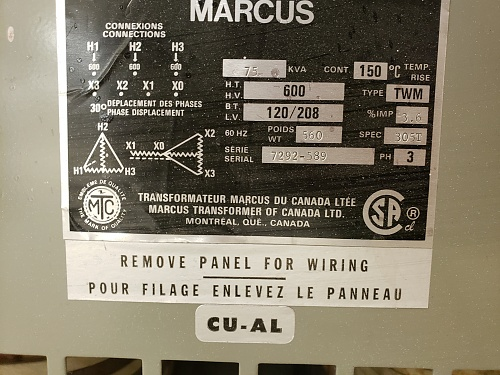I am trying to understand what a rated voltage/current/power mean for a machine. when I google it, I typically get information on how to find it from nameplate, but I am trying to understand it conceptually. Say, I manufacture transformer. I take certain wire and do 100 windings in the primary, then take the same wire do 20 winding in the secondary. Now, if I were to write the nameplate, how would I do so? Ideally, the conductors should conduct till it melts and core can intake more flux till it saturates. On what basis, can I tell a particular voltage/current to be rated?
-
3\$\begingroup\$ It will depend on things like the kind of insulation used on the wire, and how the primary and secondary windings are physically separated. If you are designing the transformer, you'd start with a desired voltage rating, and then make sure all the components you use and the physical design meet the requirements for that rating. \$\endgroup\$– The PhotonCommented Aug 10, 2020 at 17:55
-
\$\begingroup\$ The rating is the voltage that the machine is designed for. How much voltage do you want it to transform? That's the rating. Now you choose the right wire for that voltage. \$\endgroup\$– Criticizing Israel not allowedCommented Aug 10, 2020 at 17:56
-
1\$\begingroup\$ If there is a turns ratio significantly different to 1:1 then you would not use the same wire. 100 turns wouldn't be very suitable for mains (230 volts) voltages (probably more like 20 volts at 50 Hz). Sounds like you've invented something not very useful and not worth investing in a nameplate. \$\endgroup\$– Andy akaCommented Aug 10, 2020 at 17:58
-
1\$\begingroup\$ Also, using the same wire for primary and secondary is probably a bad choice, since the secondary is going to be carrying 5x the current of the primary. \$\endgroup\$– The PhotonCommented Aug 10, 2020 at 17:59
2 Answers
For motors and transformers the saturation of the iron is one of the essential elements of the voltage rating. This equation related the voltage to the peak flux density, Bmax. Ac is the area of the core, N is the number of turns and f is the frequency. The value of Bmax that you design for is determined by the core material and where on the saturation curve you want to operate.
Transformers
Primary Voltage and frequency depends on the Inductance to create about 10% of the rated current to couple the magnetic material to the secondary with about a 25% tolerance.
Higher voltage than rated will introduce nonlinear harmonics from core saturation curve knee. Lower will insufficient excitation current to achieve adequate coupling and rated VA output.
VA output is based on a linear load resistance but due to mutual coupling and secondary resistance will tend to drop 10% in voltage at the rated VA output due to the class of transformer specification for temperature rise such as 60'C from the winding losses.
Thus the transformer nameplate will have at a minimum:
the safety Class, Primary, secondary voltage and max rated VA output along with country of origin.


